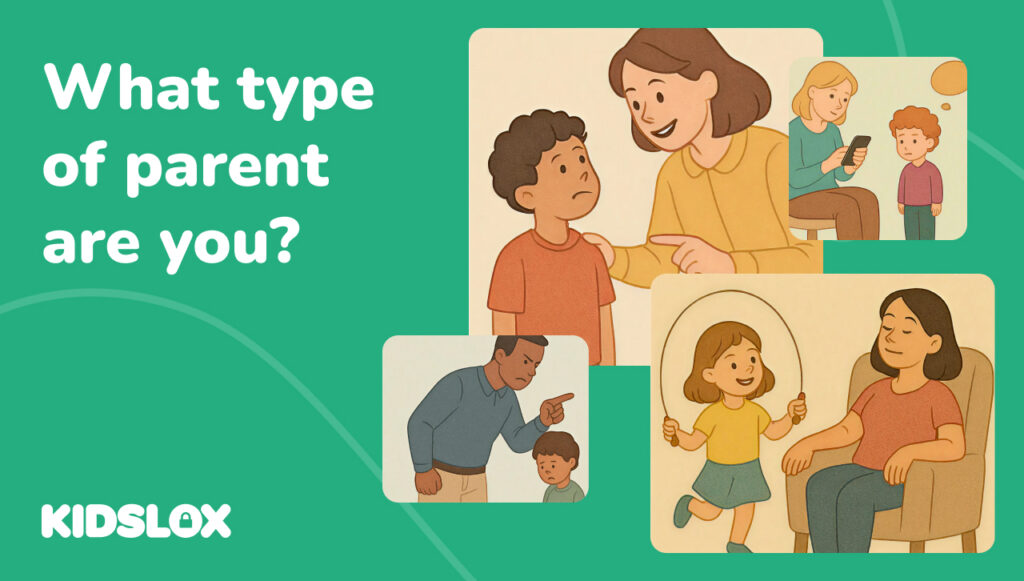Збалансований підхід до виховання впевнених дітей
У сучасному батьківському ландшафті, де кожен підхід, здається, має власну книгу правил і філософію, демократичне батьківство стало популярною золотою серединою. Він пропонує спосіб виростити емоційно здорових, впевнених дітей, не надто сильно нахиляючись до контролю чи хаосу. Грунтуючись на взаємній повазі, спілкуванні та спільній відповідальності, демократичний стиль виховання є одночасно гнучким і структурованим і стає все більш актуальним для сучасного сімейного життя.
Що таке демократичне батьківство?
Демократичне виховання – це стиль, який наголошує на співпраці між батьками та дитиною. Він побудований на ідеї, що діти заслуговують на повагу та право голосу в сімейному житті, але в рамках чітких обмежень, які відповідають віку. Батьки встановлюють очікування та керують поведінкою, але також слухають, залучають та адаптуються.
Це точно відображає те, що психолог розвитку Діана Баумрінд описала як «авторитетний» стиль виховання. Демократичний підхід збалансовує теплоту та структуру: діти отримують емоційну підтримку та дають можливість рости, а батьки дотримуються послідовних правил та очікувань.
Чим демократичний стиль виховання відрізняється від інших
Щоб зрозуміти демократичне виховання, допоможе порівняти його з іншими стилями:
- Авторитарне виховання суворе і зосереджене на контролі, часто вимагає слухняності без пояснень.
- Дозвільне виховання має високу теплоту, але мало обмежень, часто залишаючи дітей приймати власні рішення занадто рано.
- Недбале батьківство має низький рівень чуйності та структури, що часто призводить до емоційного роз’єднання.
Демократичне виховання, навпаки, встановлює баланс. Батьки теплі, чуйні та залучені, але вони також забезпечують структуру, керівництво та обмеження.
Такий підхід допомагає дітям відчувати себе в безпеці та цінності, а також вчиться відповідальності, емпатії та саморегуляції.
Демократичне батьківство на практиці
Як виглядає демократичне батьківство у повсякденному житті? Він змінюється залежно від віку дитини, але основні принципи залишаються незмінними:
У дитячому та дошкільному віці це може включати:
- Пропонувати обмежений вибір («Ти хочеш червону чашку чи синю?»)
- Визнання емоцій під час істерик і встановлення добрих, але твердих меж
- Заохочення до участі в рутині та виконання простих обов’язків
Для дітей шкільного віку це може включати:
- Співпраця щодо домашніх правил та обов’язків
- Обговорення наслідків, а не застосування покарань
- Підтримка вирішення проблем і незалежного мислення
Для підлітків демократичне виховання часто означає:
- Спільне обговорення правил і очікувань
- Дозволяє збільшити автономію, пропонуючи керівництво
- Створення простору для відкритої, чесної розмови
На кожному етапі батьки залишаються емоційно доступними та активно залученими, але уникають мікроуправління чи контролю кожного вибору.
Переваги демократичного стилю виховання
дослідження показує, що демократичне батьківство призводить до багатьох позитивних результатів. Діти, які виховуються в демократичних сім’ях, мають тенденцію до:
- Розвивайте сильну самооцінку: вони почуваються почутими, поважаними та спроможними.
- Станьте емоційно розумними: вони вчаться виражати емоції та керувати ними, спостерігаючи за своїми батьками.
- Проявіть стійкість і незалежність: вони мають впевненість, щоб досліджувати світ, знаючи, що вони мають надійну базу вдома.
- Ефективно спілкуйтеся: вони звикли бути частиною розмов і рішень.
- Будуйте шанобливі стосунки: вони розуміють межі та цінність взаємної поваги.
Ці риси часто переходять у доросле життя, сприяючи здоровим стосункам, компетентності на роботі та емоційному благополуччю.
Чи є мінуси демократичного виховання?
Хоча демократичне батьківство має багато переваг, це не завжди легко.
- Потрібен час і терпіння. Спільне прийняття рішень і чуйні відповіді можуть зайняти більше часу, ніж просте виконання правил. Це вимагає від батьків емоційної регуляції, послідовності та самосвідомості, особливо в моменти стресу.
- Це не те саме, що вседозволеність. Однією з поширених помилок є те, що надання дітям вибору означає дозволити їм керувати шоу. У демократичному вихованні батьки все ще лідирують, але роблять це з повагою та гнучкістю.
- Це не завжди охайно і охайно. Діти будуть відштовхуватися, робити помилки та перевіряти межі. Це частина процесу. Демократичне виховання вітає ці моменти як можливості для зростання, а не ознаки невдачі.
У реальному житті приклади демократичного виховання можуть виглядати так, як батьки спокійно допомагають своїй дитині пережити кризу, залучають її до планування сімейного розпорядку або відкрито вислуховують її проблеми щодо школи, друзів чи справедливості.
Як почати демократичне виховання
Якщо ви новачок у цьому підході, ось кілька практичних способів почати інтегрувати демократичні принципи у свій стиль виховання:
- Практикуйте активне слухання: Встановіть зоровий контакт, опустіться до рівня вашої дитини та відобразіть те, що ви чуєте.
- Запропонуйте вибір відповідно до віку: Це формує навички прийняття рішень і впевненість.
- Встановіть чіткі очікування та дотримуйтесь: Будьте послідовними, але пояснюйте свої міркування.
- Залучайте дітей до вирішення проблем: Запитуйте їхню думку під час вирішення конфліктів або встановлення розпорядку.
- Змоделюйте поведінку, яку ви хочете бачити: Діти більше вчаться емоційної регуляції та шанобливого спілкування від того, що ви робите, ніж від того, що ви говорите.
- Перевірте емоції: Визнайте почуття дитини, навіть якщо ви не згодні з її поведінкою.
Згодом ці практики створюють середовище, де діти почуваються захищеними, поважаними та наділеними.
Реальні поради щодо демократичного виховання вдома
Демократичне батьківство — це не просто теорія — це те, що може формувати ритм повсякденного сімейного життя. В основі цього підходу лежить залучення дітей до розмови, надання їм права голосу у прийнятті рішень і створення домашньої атмосфери, побудованої на взаємній повазі. Ось як це може виглядати на практиці:
1. Проводьте регулярні сімейні зустрічі
Сімейні зустрічі – простий, але потужний інструмент. Виділіть час на тиждень або раз на два тижні, щоб поговорити про рутину, виклики або майбутні плани. Дайте можливість висловитися кожному члену сім’ї, включаючи наймолодшого. Це зміцнює впевненість і допомагає дітям зрозуміти, що їхній голос має значення.
2. Зробіть правила спільною роботою
Замість того, щоб нав’язувати фіксований набір правил, залучайте своїх дітей до створення домашніх правил. Ви здивуєтеся, наскільки справедливими й уважними можуть бути діти, коли вони є частиною процесу. Це також означає, що вони, швидше за все, дотримуватимуться того, про що домовилися.
3. Будьте відкритими до викликів
Демократичне виховання викликає запитання — навіть про правила. Якщо дитина хоче змінити час сну чи обмеження на екрані, не вимикайте його. Слухай. Обговоріть це. Це не означає поступитися, а показати, що шанобливий виклик вітається, а не карається.
4. Поясніть «Чому»
Правила без контексту можуть здатися довільними. Допоможіть своїй дитині зрозуміти причину обмежень — чи це сон, безпека чи спільні обов’язки. Це стимулює внутрішню мотивацію, а не сліпу слухняність.
Демократичне виховання — це не те, щоб керувати своїм домом як дебатним клубом. Йдеться про зміцнення довіри, зв’язку та почуття спільної власності — дати дітям право голосу, водночас керуючи ними співчуттям і ясністю.
Як демократичне батьківство підтримує надійну прихильність
Демократичне виховання має багато спільних цінностей з теорією прихильності. Обидва підкреслюють емоційну чуйність, послідовність і створення безпечної бази, з якої діти можуть досліджувати світ.
У демократичній родині діти знають, що їхні голоси мають значення, їхні емоції безпечно виражати, а їхні батьки будуть поруч із підтримкою та керівництвом. Це створює основу для надійної прихильності — вирішального фактора емоційного здоров’я та стійкості протягом усього життя.
Управління часом перед екраном у демократичній родині
Час, проведений за екраном, є однією з найпоширеніших проблем для батьків сьогодні, і в демократичній сім’ї його управління залежить не від суворих обмежень, а більше від спільного розуміння та обмежень.
У демократичному стилі виховання мета полягає не лише в контролі використання екрану, а в тому, щоб допомогти дітям навчитися керувати ним самостійно. Це починається із залучення їх до розмови. Замість того, щоб нав’язувати жорсткі правила, батьки працюють зі своїми дітьми, щоб встановити реалістичні очікування. Наприклад, ви можете сісти разом, щоб створити сімейну медіа-угоду: скільки дозволено проводити час перед екраном у шкільні вечори, а не у вихідні, який вміст дозволено та коли пристрої слід прибрати.
Цей спільний підхід дає дітям відчуття власності — і відповідальності. Якщо правила порушуються, наслідки обговорюються разом і формуються як можливості для навчання, а не як покарання.
Батьки також формують здорові звички перед використанням екрану: відкладати телефони під час їжі, пам’ятати про власне цифрове використання та віддавати перевагу спілкуванню віч-на-віч. Йдеться про створення збалансованого цифрового середовища, а не про повну заборону екранів.
Найважливіше те, що час за екраном стає частиною ширшої розмови про благополуччя, включаючи сон, школу, фізичні вправи та час із сім’єю. Діти вчаться не лише коли вимикати екрани, а й чому це важливо.
У демократичній родині час перед екраном не є полем битви. Це шанс зміцнити довіру, навчити дітей відповідальності та допомогти дітям виробити звички, які будуть служити їм далеко за межі дитинства.
Чи підходить мені демократичне виховання?
Демократичне виховання — це не досконалість. Це про зв’язок, повагу та стабільне лідерство. Це дозволяє дітям вирости здібними, впевненими в собі особистостями в безпеці сприйнятливого та структурованого середовища.
У світі, повному галасу про те, як виглядає «хороше» виховання, демократичне виховання пропонує освіжаючу збалансовану альтернативу. Він не вимагає досконалості від батьків чи дітей. Він просто просить нас слухати, направляти та рости разом.





